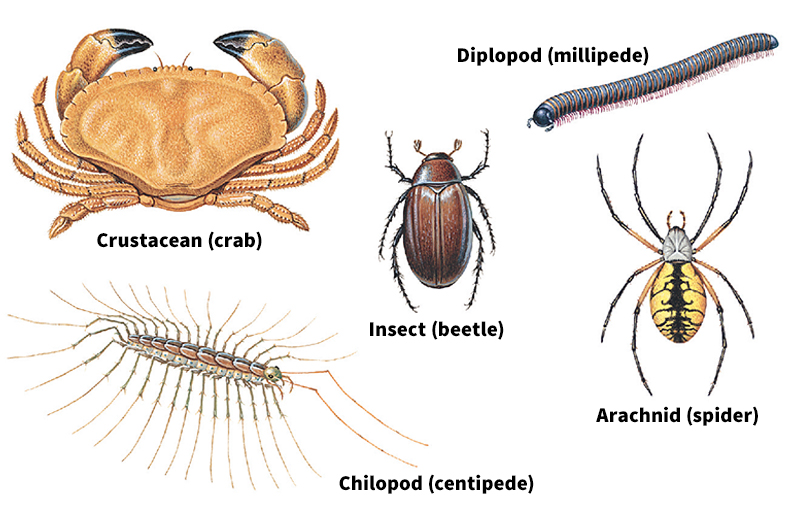Arthropod, << AHR thruh pod, >> is an animal with jointed legs and no backbone. Arthropods make up the largest division, or phylum, of the animal kingdom—the phylum Arthropoda. The term arthropoda comes from Greek words meaning jointed feet, though it is the legs rather than the feet that are jointed. Among the most important groups of arthropods are the following: (1) insects, including cockroaches, beetles, bees, butterflies, and many others; (2) crustaceans, including such well-known animals as crabs, lobsters, shrimps, sowbugs, and barnacles; (3) arachnids, including mites, ticks, spiders, and scorpions; (4) chilopods, or centipedes; and (5) diplopods, or millipedes. The arthropod phylum contains more than three-fourths of all the different kinds of animals. Arthropods outnumber people 200 million to one. Insects make up the largest class of arthropods in terms of the number of species (kinds).

The bodies of arthropods, as well as their legs, are made up of sections. Among some arthropods, each section of the body has its own pair of legs. Most of these legs are used for swimming or walking. In some types of arthropods, certain legs have developed special shapes and uses. Some serve as sucking organs, some are jaws, some serve as weapons, and some are sense organs. Insects lack most of the pairs of legs found in other arthropods. They have only three pair. One pair is attached to each segment of an insect’s chest or thorax. Insects also may have one or two pairs of wings.

Arthropods have an outside shell, or exoskeleton, that contains a stiff, horny material called chitin. Certain arthropods, such as flies and moths, have only thin, weak shells. Others, including crabs and lobsters, have thick, strong shells. Nearly all arthropods have a kind of heart and blood system and usually a well-organized nervous system. Some arthropods have simple eyes, some have compound eyes, and some (including many insects) have eyes of both types.
